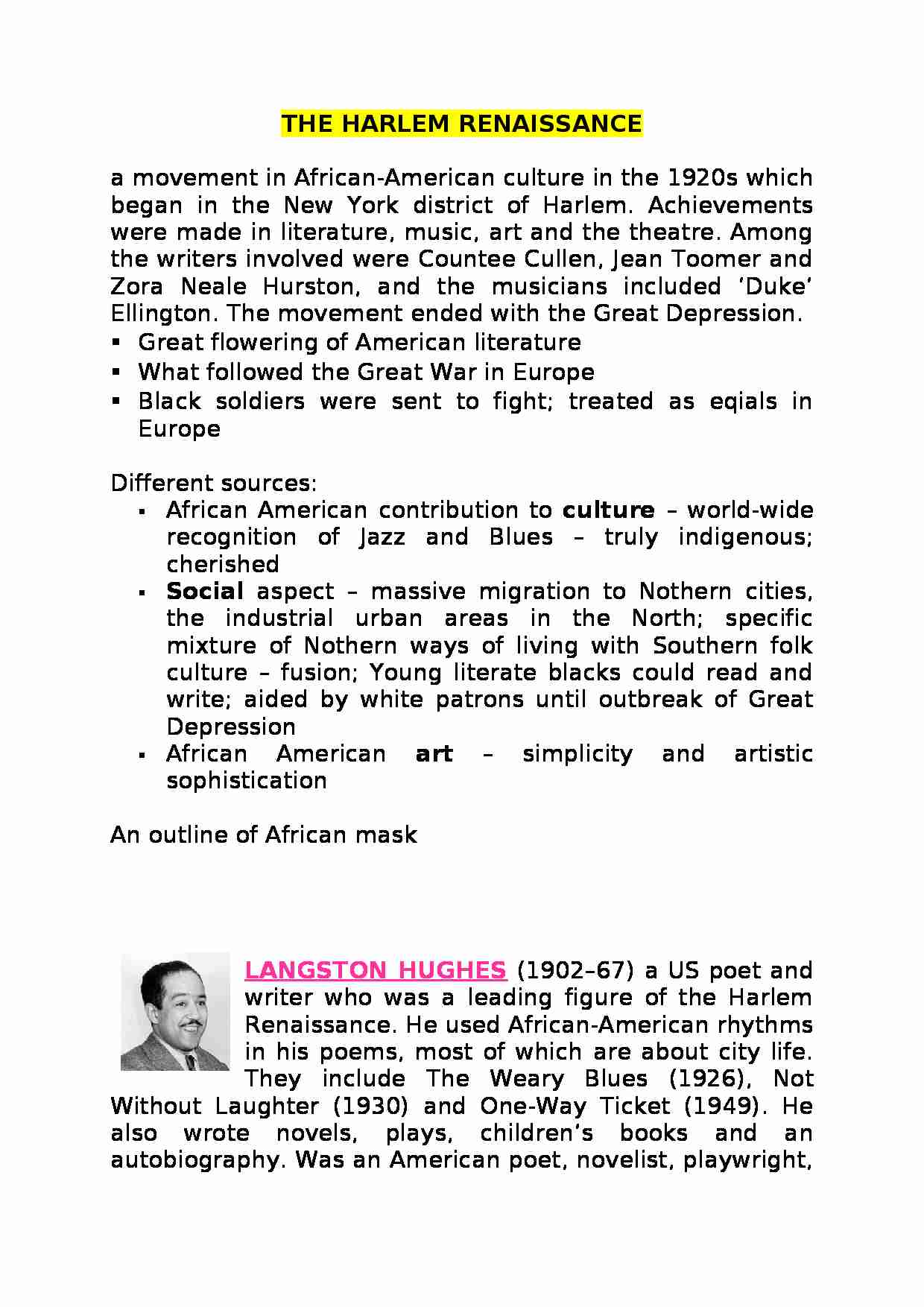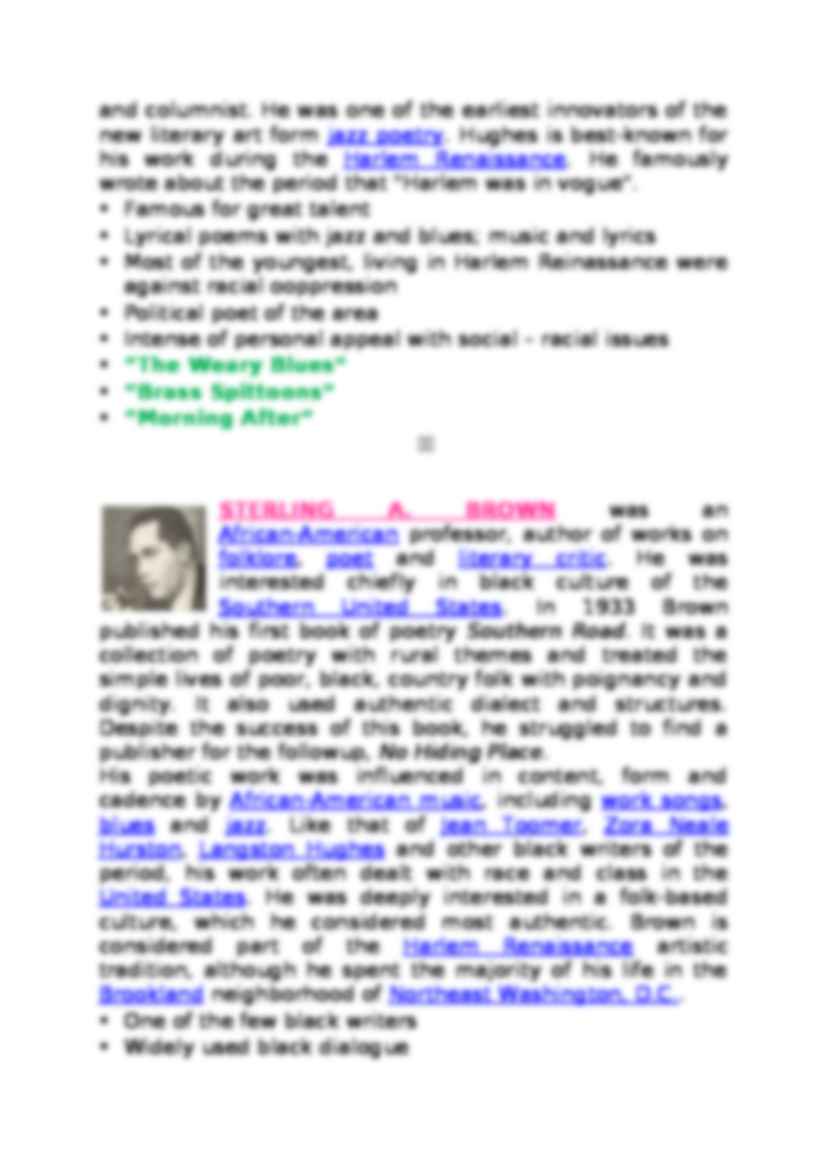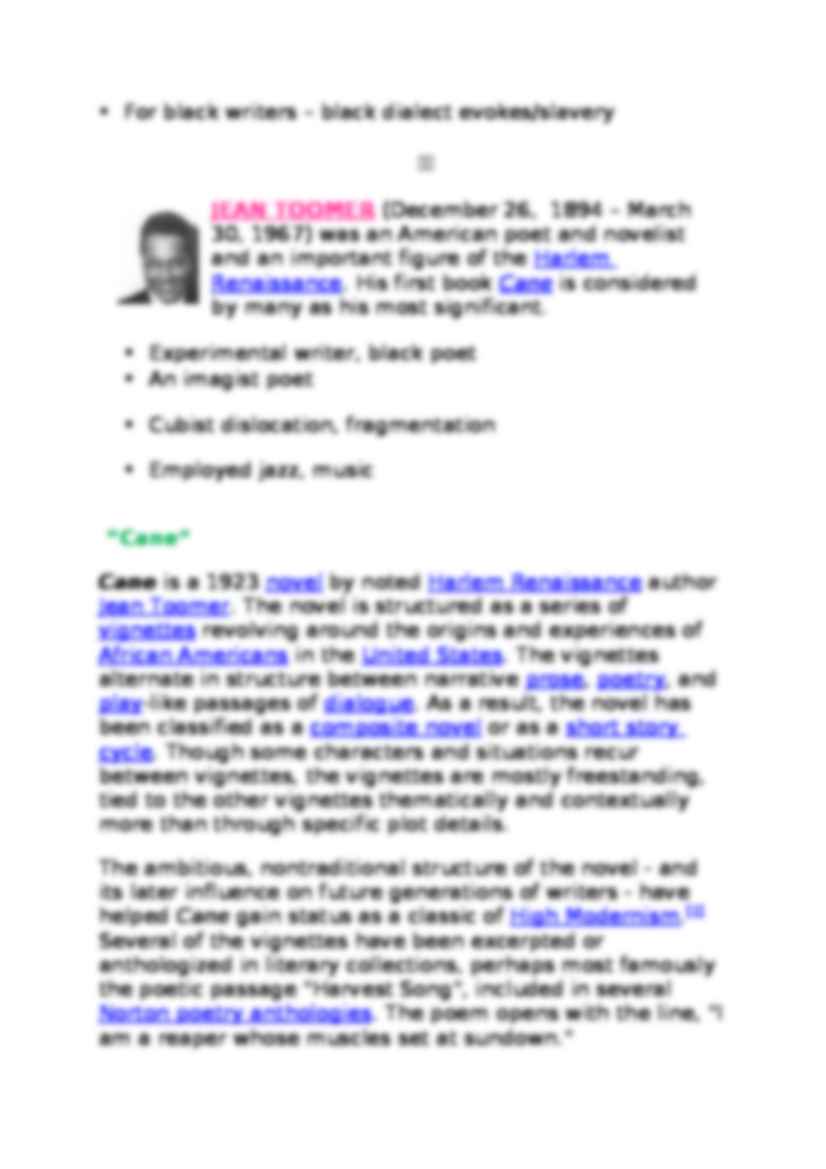To tylko jedna z 4 stron tej notatki. Zaloguj się aby zobaczyć ten dokument.
Zobacz
całą notatkę



the Harlem Renaissance
a movement in African-American culture in the 1920s which began in the New York district of Harlem. Achievements were made in literature, music, art and the theatre. Among the writers involved were Countee Cullen, Jean Toomer and Zora Neale Hurston, and the musicians included `Duke' Ellington. The movement ended with the Great Depression.
Great flowering of American literature
What followed the Great War in Europe
Black soldiers were sent to fight; treated as eqials in Europe
Different sources:
African American contribution to culture - world-wide recognition of Jazz and Blues - truly indigenous; cherished
Social aspect - massive migration to Nothern cities, the industrial urban areas in the North; specific mixture of Nothern ways of living with Southern folk culture - fusion; Young literate blacks could read and write; aided by white patrons until outbreak of Great Depression
African American art - simplicity and artistic sophistication
An outline of African mask
Langston Hughes (1902-67) a US poet and writer who was a leading figure of the Harlem Renaissance. He used African-American rhythms in his poems, most of which are about city life. They include The Weary Blues (1926), Not Without Laughter (1930) and One-Way Ticket (1949). He also wrote novels, plays, children's books and an autobiography. Was an American poet, novelist, playwright, and columnist. He was one of the earliest innovators of the new literary art form jazz poetry. Hughes is best-known for his work during the Harlem Renaissance. He famously wrote about the period that "Harlem was in vogue".
Famous for great talent
Lyrical poems with jazz and blues; music and lyrics
Most of the youngest, living in Harlem Reinassance were against racial ooppression
Political poet of the area
Intense of personal appeal with social - racial issues
“The Weary Blues”
“Brass Spittoons”
“Morning After”
Sterling A. Brown was an African-American professor, author of works on folklore, poet and literary critic. He was interested chiefly in black culture of the Southern United States. In 1933 Brown published his first book of poetry Southern Road. It was a collection of poetry with rural themes and treated the simple lives of poor, black, country folk with poignancy and dignity. It also used authentic dialect and structures. Despite the success of this book, he struggled to find a publisher for the followup, No Hiding Place.
His poetic work was influenced in content, form and cadence by African-American music, including work songs, blues and jazz. Like that of
... zobacz całą notatkę






Komentarze użytkowników (0)